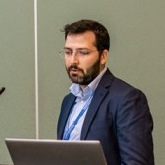Advances in Photoassisted and Photocatalytic Processes for Water Remediation
A special issue of Catalysts (ISSN 2073-4344). This special issue belongs to the section "Photocatalysis".
Deadline for manuscript submissions: closed (10 December 2022) | Viewed by 29358
Special Issue Editors
Interests: photocatalysis; catalytic wet peroxide oxidation; advanced oxidation processes for wastewater treatment; catalyst synthesis and characterization
Interests: photocatalysis; photoassisted processes; development of new catalysts; new technologies based on AOPs combination for water remediation
Special Issue Information
Dear Colleagues,
Over the last few years, a remarkable amount of research has been devoted to the application of advanced oxidation processes (AOPs) as viable and effective technologies for the treatment of pollutants that are hardly removed by other conventional wastewater treatments.
In this context, the development of new trends covering new photoassisted AOPs-based processes and the design of active and stable photocatalysts keeping economic feasibility and technical applicability aspects seem relevant key issues of the whole process.
For this purpose, this Special Issue is aimed at covering the latest trends in water remediation, either for purification (including oxidation and reduction processes) or for disinfection, as well as novel achievements related to the syntheses of feasible catalysts for different photoassisted AOPs. Thus, we welcome both original and review articles, covering not only but mainly the following topics:
- Solar wastewater treatment;
- Water treatment/disinfection;
- Photoassisted AOPs combined with other technologies;
- Emerging pollutants removal;
- Real wastewater applications;
- Design of new photocalysts;
- Scale-up, engineering aspects of light-assisted AOPs.
Dr. Jaime Carbajo
Prof. Dr. Patricia García-Muñoz
Guest Editors
Manuscript Submission Information
Manuscripts should be submitted online at www.mdpi.com by registering and logging in to this website. Once you are registered, click here to go to the submission form. Manuscripts can be submitted until the deadline. All submissions that pass pre-check are peer-reviewed. Accepted papers will be published continuously in the journal (as soon as accepted) and will be listed together on the special issue website. Research articles, review articles as well as short communications are invited. For planned papers, a title and short abstract (about 100 words) can be sent to the Editorial Office for announcement on this website.
Submitted manuscripts should not have been published previously, nor be under consideration for publication elsewhere (except conference proceedings papers). All manuscripts are thoroughly refereed through a single-blind peer-review process. A guide for authors and other relevant information for submission of manuscripts is available on the Instructions for Authors page. Catalysts is an international peer-reviewed open access monthly journal published by MDPI.
Please visit the Instructions for Authors page before submitting a manuscript. The Article Processing Charge (APC) for publication in this open access journal is 2700 CHF (Swiss Francs). Submitted papers should be well formatted and use good English. Authors may use MDPI's English editing service prior to publication or during author revisions.
Keywords
- Advanced oxidation processes (AOPs)
- Photoassisted processes
- Solar-based AOPs
- Photocatalysis
- Visible-driven photocatalysts
- Wastewater disinfection
- Emerging pollutants
- Wastewater regeneration






